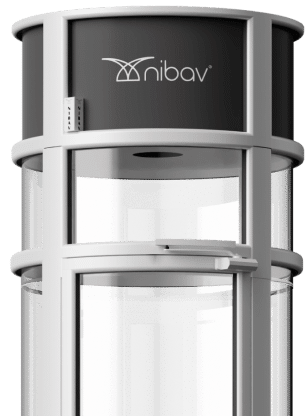
Table of Contents
What is a Pneumatic Elevator?
A pneumatic elevator, sometimes referred to as a vacuum elevator or an air-driven elevator, is a kind of home elevator or small-scale elevator that moves the elevator using air pressure differentials. Vacuum elevators, in contrast to conventional elevators, rely on a pneumatic vacuum elevator system for vertical transportation rather than cables, pulleys or hydraulic systems.
How Does a Pneumatic Elevator Work?
- Design: A cylindrical, transparent elevator that moves inside a vertical shaft makes up a pneumatic elevator. Typically composed of glass or other transparent materials, the automobile offers a 360-degree view as it travels.
- Air Pressure System: The affordable home elevators system consists of an air valve underneath an elevator and a vacuum pump at the top of the shaft. These parts produce a pressure difference, which causes movement.
- Ascending: How Does a Pneumatic Elevator Work? The air valve at the top of the shaft opens when a passenger enters the elevator and selects the appropriate floor, causing air to be quickly ejected from the system. This lowers the pressure in the area above the automobile.
- Descending: The air valve closes and the vacuum pump starts working as the automobile descends, increasing the pressure above it. The elevator is pushed downward by this pressure, enabling a controlled descent.
- Safety Features: Safety measures on pneumatic elevators frequently include emergency stop buttons, sensors to avoid obstacles, and mechanical locks to lock the car at each floor.
Because of their distinctive appearance, small footprint, and quiet operation, pneumatic elevators are well-known. They have a number of benefits, such as simple installation without the need for a separate machine room, minimal building requirements, and increased energy efficiency over conventional elevators. Their translucent car design additionally offers a visually pleasing and airy feeling when traveling.
It’s important to remember, though, that pneumatic elevators have some restrictions. In comparison to other elevator types, they often have lesser weight capacities, making them potentially unsuitable for heavy-duty or commercial applications. Furthermore, as they depend on air pressure differences, their performance may be impacted by sudden changes in atmospheric pressure or strong winds.
Pneumatic elevators offer an attractive and space-saving alternative to conventional elevator systems for residential or small-scale vertical transportation.
How Safe are pneumatic elevators?
The usage of pneumatic elevators, commonly referred to as vacuum elevators, is typically regarded as safe. It’s crucial to remember that safety might vary depending on a number of elements, including the design, setup, and upkeep of the particular elevator model.
Pneumatic elevator safety is impacted by the following factors:
- Design and Construction: Pneumatic elevators are built to resist the necessary loads and forces since they are designed to adhere to strict safety requirements and regulations. The safety of the elevator is greatly influenced by the building materials and engineering methods utilized.
- Safety Features: Passengers are protected by safety features in pneumatic elevators. Emergency stop buttons, lock mechanisms, and sensors that identify obstacles or issues are frequently included in these features. Some types incorporate backup devices to safely lower the elevator in the event of a power outage.
- Maintenance and Inspections: Pneumatic elevators must be maintained and inspected frequently to remain safe. Following the manufacturer’s suggested maintenance schedule is crucial for building owners or facility managers, as is hiring qualified personnel to carry out inspections and any repairs.
- User Responsibilities: Users of pneumatic elevators should be cautious and adhere to safety precautions. This entails preventing the elevator from becoming overloaded, keeping body parts away from the airlock, and refraining from attempting to leave the elevator in case of an emergency or breakdown.
It’s important to remember that pneumatic elevators occasionally encounter breakdowns or malfunctions, just like any mechanical device. However, the chance of mishaps or injuries can be reduced with correct installation, routine maintenance, and adherence to safety recommendations.
It is advised to speak with a knowledgeable home lifts or home elevators specialist or get in touch with the manufacturer if you have questions about the safety of a particular pneumatic elevator.
Get in touch with our home elevator experts now and experience your home with a whole new level of luxury and comfort.
Talk to Our Experts
